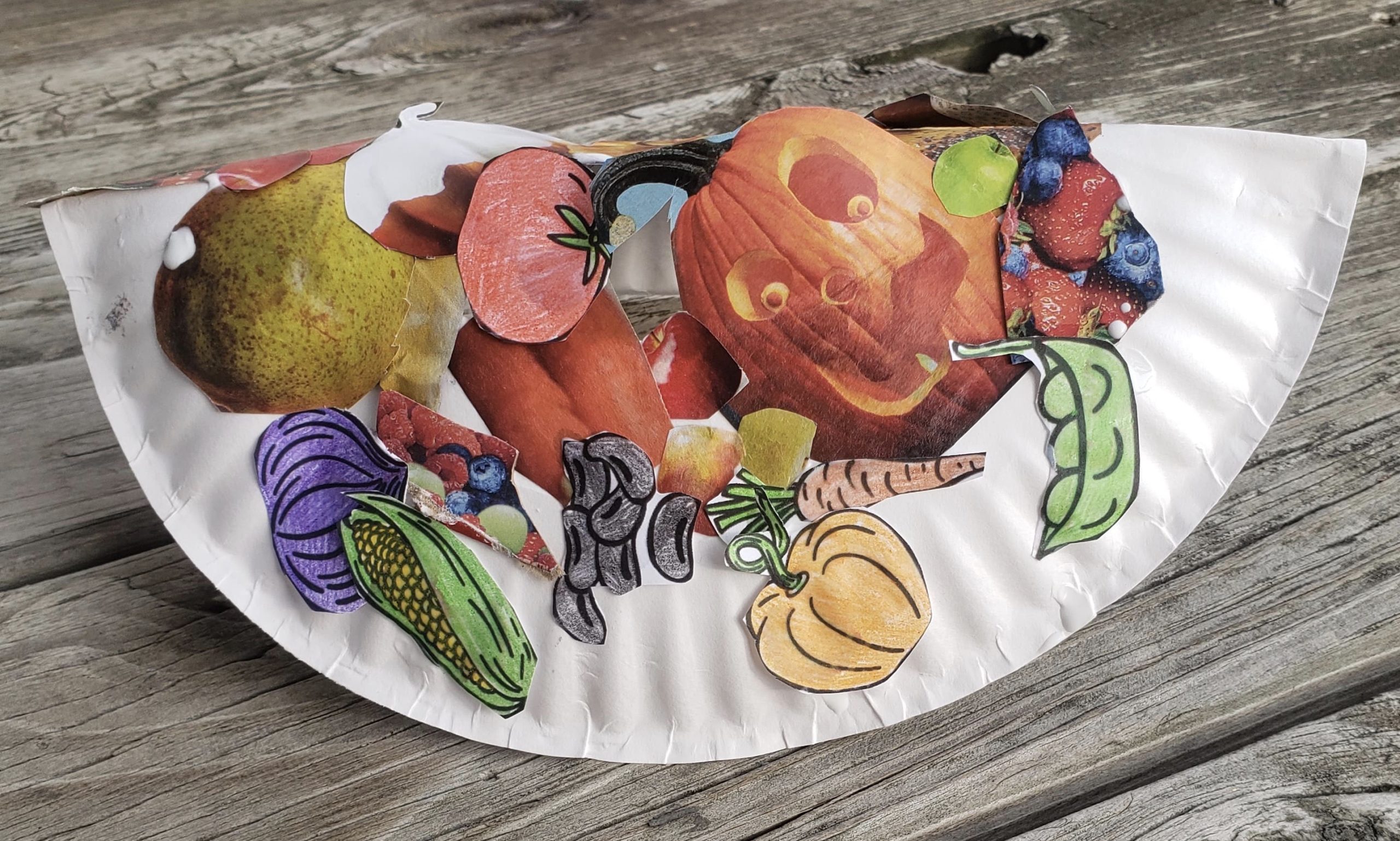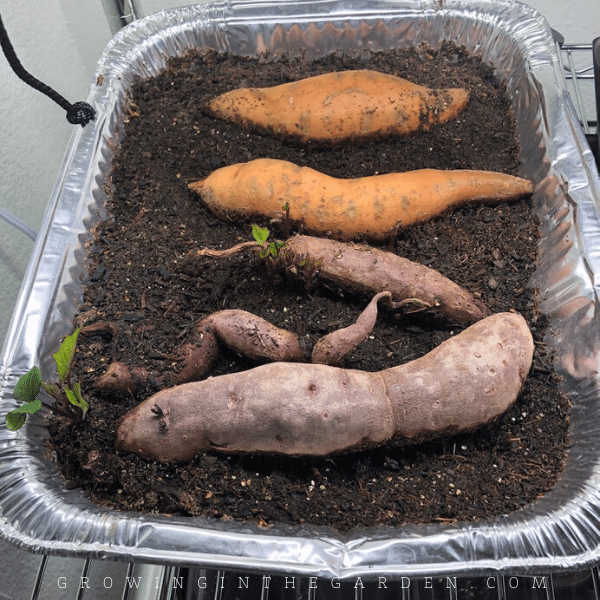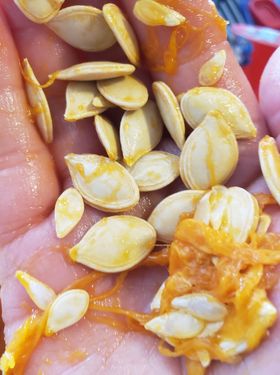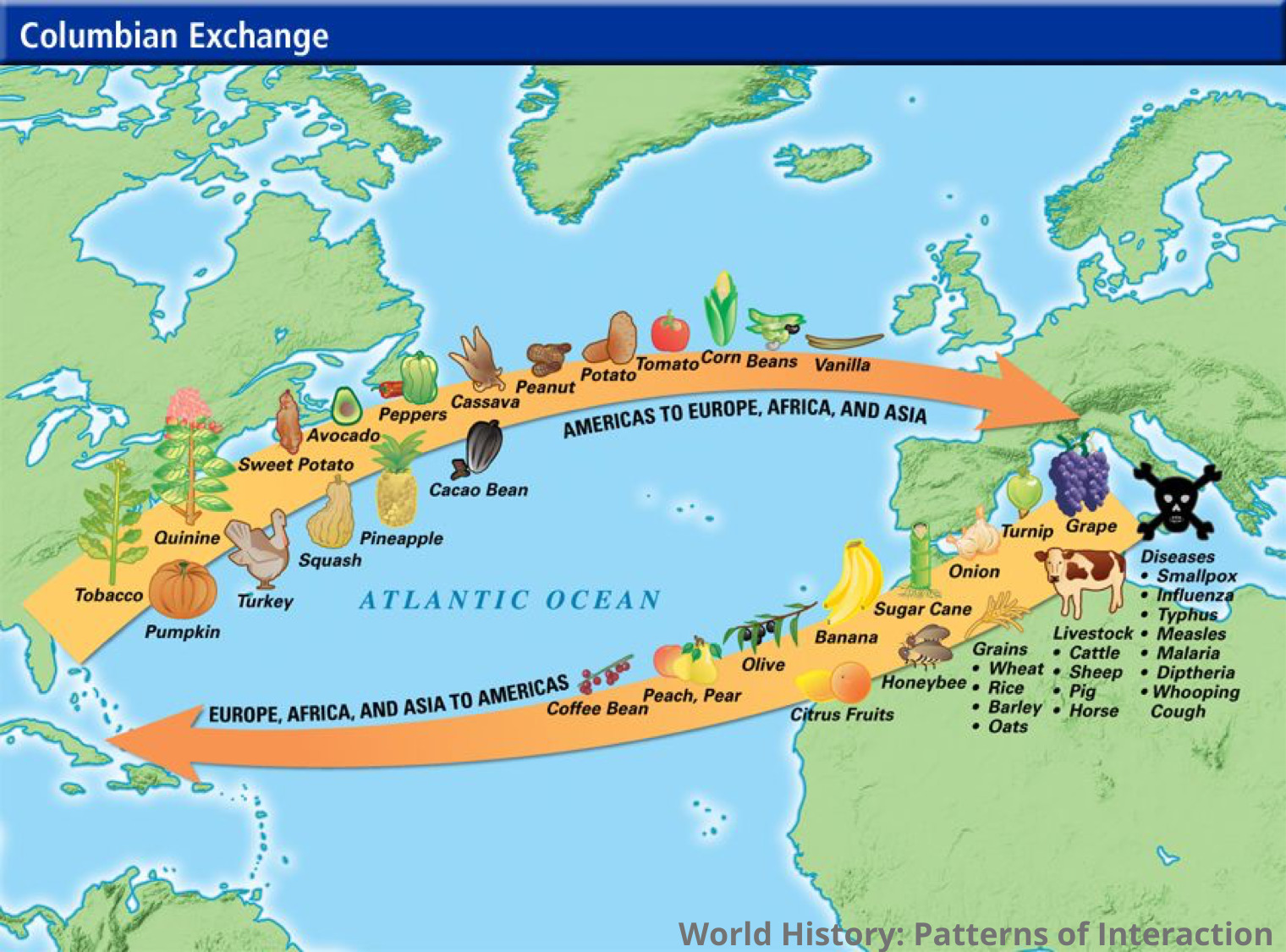Family Activities: Still Life with Two Figures (Quick Tip)
Family Activities: Still Life with Two Figures
By Kate Poweska, Family Programs Intern
Harvest and Food
During the time of this painting in 1622, trade was in full swing across the Atlantic Ocean. Many fruits, vegetables, and animals that were traditionally uncommon in certain areas were made available around the world because of exploration.
In the market scene on the left, Still Life with Two Figures, you can see the abundance of foods that were available.

Make Your Own Still Life: The Dutch used a lot of symbolism in their paintings. A symbol is a thing that stands for something else. For example, a heart is a symbol for Valentine’s Day. In Still Life with Two Figures, the pumpkin is most likely a symbol of rebirth and harvest. Another symbol of harvest is the cornucopia. It is in the shape of a goat’s horn or a basket and is often depicted overflowing with fruits, vegetables, and nuts.
You will need
- Paper plate
- Scissors
- Coloring supplies
- Glue
Steps
- Take a paper plate and fold in half
- Cut out a semicircle from the top
- Fold out so it can stand upright
- Color
- Cut out and glue on fruits, vegetables or other foods that you find in magazines or elsewhere
Have you ever been to a farmer’s market? Check out the State Farmers Public Market in Raleigh.
Farmers grow many foods locally for us to enjoy in season. Take a look in your kitchen. What foods do you enjoy that are grown elsewhere?
Your Food’s Journey
Many of the foods that you eat come from a different state or country. Look at the map to see where some foods came from. Tomatoes are thought to have come from South America and turnips originated in Asia. Today, we can find many foods in a grocery store all year. Many people still check out farmer’s markets to shop in season for the freshest fruits and vegetables and to support local businesses.
Steps
- Print out the Map of Food and the Cornucopia
- Cut out the vegetables from the map and color them.
- On the cornucopia, find their outlines and match them up
- Glue the vegetables and fruit on their respective shadow
Grow a Sweet Potato Sprout: Farmers in North Carolina grow 1.7 billion pounds of sweet potatoes each year. That’s a lot! Even though it is popular in North Carolina, the sweet potato is thought to have originated in South America or even Polynesia. Follow these steps to grow a sweet potato and in about a week, you will start to see sprouts.
You will need
- Sweet potato
- Foil pan and lid
- Potting soil
- Jar or glass
Steps
- Poke holes in the bottom of the foil pan
- Put foil pan on top of lid for drainage
- Fill foil pan with potting soil
- Nestle the sweet potato and cover about half with soil
- Place in a warm place with sunlight
- Water frequently and watch for sprouts to form

When the sprout is a couple of inches long, it is time to plant in a jar of water.
To plant your sprout
- Remove lower leaves and place in a jar of water in a warm light place
- Roots will start to develop in 1-2 days
- Switch out water once a week
- Once roots are a couple of inches long, plant in soil
Roast pumpkin seeds: There are many symbols in Still Life with Two Figures. The pumpkin, for example, is a symbol of abundance. Take a pumpkin and as you carve it, try counting how many seeds you find. An average pumpkin has 500 seeds!

Storytelling: The Tuscarora in North Carolina have special techniques and traditions for growing and harvesting white corn. The legend of the corn spirit says that long ago there was a village whose people were blessed with good harvests. Because they had so much, they stopped taking care of the fields. The autumn after the harvest moon, the people went hunting but could not find food in the forests or the streams. They were worried that they would starve. One villager, who had continued to care for his fields, went to tell the others to respect the corn fields and in return the Corn Spirit would provide a bountiful harvest.
What stories do you remember your family telling you?
What are your family traditions?
Read, Watch, Move
Explore these resources learn more about food origins, harvest traditions, and Tuscarora culture.
- Braiding white corn
- Hungry Planet: What the World Eats by Peter Menzel
- The Tuscarora by Jill D. Duvall

